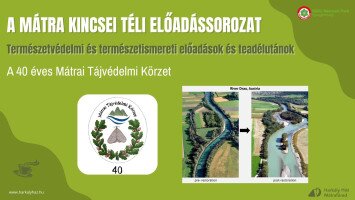Natural area of local importance.
Location, approach
When mentioning the protected area, we can often find the name "Kiskő of Bárna", although the area belongs to Szilaspogony administratively. The 379 meters high Kiskő basalt stands on the eastern edge of the Medves-Ajnácskő basalt area and rises 25-30 meters from the environment. The easiest way to reach the Kiskő volcanic cone is from Szilaspogony, through the dirt road in the Cikorád Valley from the northwest to the Kiskő neck.
Formation, geomorphological characteristics
Examining the geological structure of Kiskő, we can make many special discoveries. The lower two-thirds of the cone is made up of layers of yellow, sand, sandstone, with volcanic rock emerging only at the peak. The 20-25 million-year-old seabed of 50-100 m depth should be followed by a series of shallow sea and then inland rivers. In the vicinity of Kiskő, these are missing, or they have been destroyed by erosion, they have not developed locally, or they have not surfaced due to the coverage.
The so-called "lower-rhyolite tuff" of volcanic origin at the tip of the Kiskő is probably located directly on the glauconite sandstone, the fragments of which are known. The rhyolite tuff is not followed by well-known coal deposits in the area. Sediments and volcanic formations from Kiskő are missing for more than 15 million years. They probably did form, but they were the victims of erosion during the land phase preceding the basalt volcanism. Basalt volcanism has taken place in several stages 2.4 million years ago. In the first stage, basalt tuff appeared on the surface through the erupted chimney, from which a tuff rampart could form around the chimney. In the second stage, through the central chimney the bombs and blocks have surfaced, forming the material of the current peak. In the last phase of volcanic activity, this was broken by a basalt lode.
Flora and fauna
The rock and surrounding forests provide habitat for the following plants. The bladder-senna (Colutea arborescens) is also widespread on basalt bedrock in downy-oak shrubs and in drier shrub-toe-free oaks. The Fumewort (Corydalis solida) is also present in isolated populations. In fact, on the ruins of Oligocene strata in the gorge forests, the Ragwort (Senecio hercynicus) occurs. Sword-leaved Helleborine (Cephalanthera longifolia) and Small-leaved Helleborine (Epipactis microphylla) are also found sporadically in oak and beech forests. The Michel's Sedge (Carex michelii) can be sporadically found in downy oak trees and shrub-sessile oak trees. The area has very small, fragmentary populations of Orphan maidenhair (Stipa pennata) on the basalt soils of the southern exposures. Specimens of Lesser Butterfly-Orchid (Platanthera bifolia), Maiden Pink (Dianthus deltoides) and Dusty Miller (Lychnis coronaria) are also found in the area. Several specimens of the protected scarce swallowtail (Iphiclides podalirius) and Old World swallowtail (Papilio machaon) can be seen near the rock peak, the older oak trees provide an ideal habitat for the Stag Beetle (Lucanus cervus), a rare variant of this species is ab. capreolousis can be found in the area.
Sights to see
The most spectacular and exciting part of Kiskő is its cave formed in basalt. From the summit there is a 'natural' entrance, which is 14 meters in size along with the cavern. It also has an artificially designed horizontal cavern. There are several explanations for the origin of the cave. It was previously explained by the gas bladder stuck in the basalt and later by tectonic motions. The earliest written record of the cave dates back to 1865. According to the legend, its cavity is a "treasure-trove". According to folk tradition, the Turks lived there. This rumor did not leave the Tarna Valley owner, Gejza Kemény, at ease. Between 1909 and 1910, with three men from Pogony, he cut a nearly 10 meters long horizontal barn into hard basalt. However, no treasure was found. There are three other artificial repositories in the area that are likely to have been created for the purpose of coal exploration. |

















